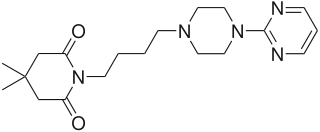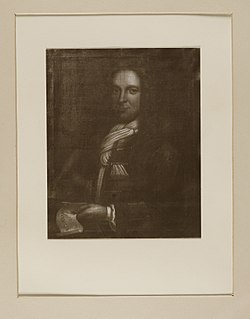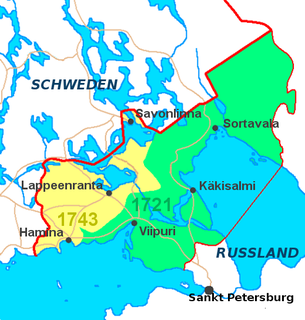
Gepirone is an antidepressant and anxiolytic drug of the azapirone group that was synthesized by Bristol-Myers Squibb in 1986 and has been under development for the treatment of depression but has yet to be marketed. It has been under development in the U.S. in an extended release form, but despite completing phase III clinical trials and demonstrating efficacy, it has been rejected multiple times by the Food and Drug Administration (FDA) during the drug approval process. However, in March 2016, the FDA reversed course and ruled favorably on the efficacy of gepirone, clearing the way for its eventual approval. As of January 2018, the drug is still in pre-registration.

John Wynne was Bishop of St Asaph (1715–1727) and of Bath and Wells (1727–1743), having previously been principal of Jesus College, Oxford (1712–1720).

Ribemont is a commune in the Aisne department in Hauts-de-France in northern France. It is the birthplace of Marquis de Condorcet (1743-1794), figure of the French Revolution

The Celsius scale, also known as the centigrade scale, is a temperature scale used by the International System of Units (SI). As an SI derived unit, it is used by all countries except the United States, the Bahamas, Belize, the Cayman Islands and Liberia. It is named after the Swedish astronomer Anders Celsius (1701–1744), who developed a similar temperature scale. The degree Celsius (°C) can refer to a specific temperature on the Celsius scale or a unit to indicate a difference between two temperatures or an uncertainty. Before being renamed to honor Anders Celsius in 1948, the unit was called centigrade, from the Latin centum, which means 100, and gradus, which means steps.

The Great Comet of 1744, whose official designation is C/1743 X1, and which is also known as Comet de Chéseaux or Comet Klinkenberg-Chéseaux, was a spectacular comet that was observed during 1743 and 1744. It was discovered independently in late November 1743 by Jan de Munck, in the second week of December by Dirk Klinkenberg, and, four days later, by Jean-Philippe de Chéseaux. It became visible with the naked eye for several months in 1744 and displayed dramatic and unusual effects in the sky. Its absolute magnitude — or intrinsic brightness — of 0.5 was the sixth highest in recorded history. Its apparent magnitude may have reached as high as -7, leading it to be classified among what are called the "Great Comets". This comet is noted especially for developing a 'fan' of six tails after reaching its perihelion.
The Siege of Trichinopoly took place in 1743 during an extended series of conflicts between the Nizam and the Maratha Empire for control over some parts of southern India. An army led by Asaf Jah I, the Nizam of Hyderabad, besieged the town of Trichinopoly, which was governed by Murarao Ghorpade. After about four months of siege, the Nizam successfully bribed Murrarao to surrender, which he did on 29 August 1743.
The Dean of Ross is based at the Cathedral Church of St. Fachtna in Rosscarbery in the Diocese of Ross within the united bishopric of Cork, Cloyne and Ross of the Church of Ireland.
Events in the year 1743 in Norway.

Thomas Rattray (1684–1743) was a Scottish Episcopalian bishop who served as the Primus of the Scottish Episcopal Church from 1738 to 1743.
İmircik is a village in the Vezirköprü district of Samsun Province, Turkey.

Loisey is a commune in the Meuse department in Grand Est in north-eastern France. Between 1973 and 2014 it was part of the commune Loisey-Culey. The Encyclopédiste Charles Millot was priest of Loisey from 1743 to 1769.

Events from the year 1743 in Sweden
Events from the year 1743 in Spain
Events from the year 1743 in Russia










